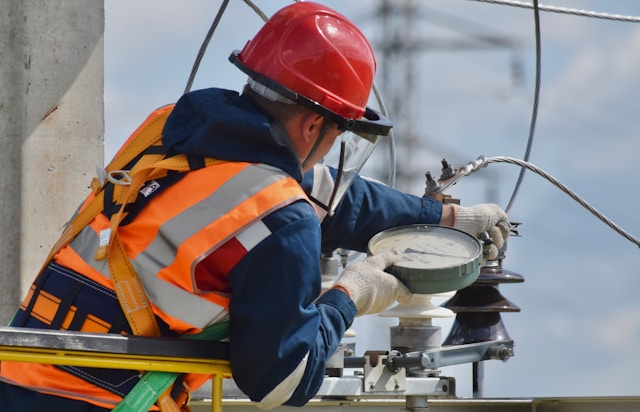
- Seal drafts around doors and windows to prevent heat loss and save energy.
- Upgrade insulation in key areas like the attic and walls for improved efficiency.
- Schedule regular maintenance for HVAC systems to ensure peak performance.
- Replace old appliances with ENERGY STAR-certified models to reduce energy consumption.
- Maximize natural light and use energy-efficient lighting to lower electricity usage.
Are you tired of those sky-high energy bills that seem to arrive like clockwork every month? You’re not alone. Many homeowners are faced with the daunting task of managing escalating energy costs. But fear not! There are practical steps you can take to rein in those expenses and achieve greater energy efficiency in your home. This guide will explore five actionable strategies that can help you lower your energy bills and save money in the long run.
1. Upgrade Your Insulation
Seal Those Drafts
One of the primary culprits behind high energy bills is air leakage through drafty doors and windows. Even small gaps can lead to significant heat loss, forcing your heating and cooling systems to work overtime to maintain a comfortable indoor temperature. Conduct a thorough inspection of your home and seal any drafts using weatherstripping or caulking. Pay special attention to areas around doors, windows, and electrical outlets.
Invest in Quality Insulation
Proper insulation is key to maintaining a consistent indoor temperature and reducing the strain on your HVAC system. Consider upgrading to high-quality insulation in your attic, walls, and basement. This will improve energy efficiency and enhance comfort levels throughout your home. If you’re unsure about the condition of your insulation, consider scheduling a home energy efficiency assessment to identify areas for improvement.
2. Optimize Your Heating and Cooling Systems
Schedule Regular Maintenance
Like any mechanical system, your heating and cooling equipment requires regular maintenance to operate efficiently. Schedule annual tune-ups for your furnace, air conditioner, and heat pump to ensure they’re running at peak performance. Clean or replace air filters as needed to improve airflow and reduce energy consumption. Additionally, consider upgrading to a programmable thermostat to maximize energy savings by automatically adjusting temperature settings based on your schedule.
Upgrade to Energy-Efficient Appliances
Old, inefficient appliances can significantly contribute to high energy bills. When it’s time to replace your refrigerator, dishwasher, or washing machine, opt for models that are ENERGY STAR certified. These appliances are designed to consume less energy without sacrificing performance, helping you save money on your utility bills over time. You can also reduce energy usage by running full loads in your dishwasher and washing machine and avoiding peak energy hours whenever possible.
3. Harness the Power of Natural Light
Embrace Daylighting
Maximizing natural light in your home not only reduces the need for artificial lighting but also helps regulate indoor temperatures. Keep curtains and blinds open during the day to let sunlight in, especially in south-facing rooms. Consider installing skylights or solar tubes to bring even more natural light into darker areas of your home. Just be sure to close window coverings at night to retain heat during colder months.
Upgrade to Energy-Efficient Lighting
Traditional incandescent bulbs waste a significant amount of energy as heat, making them far less efficient than modern alternatives. Replace outdated light bulbs with energy-efficient options such as LED or CFL bulbs, which consume less energy and last much longer. While the upfront cost may be slightly higher, the long-term savings in energy bills far outweigh the initial investment.
4. Practice Smart Energy Usage Habits
Unplug Electronics When Not in Use

Many electronic devices continue to draw power even when they’re turned off, contributing to phantom energy usage. Combat this wasteful behavior by unplugging devices such as TVs, computers, and chargers when they’re not in use. Consider using power strips to easily disconnect multiple devices at once, especially in areas with a high concentration of electronics, like entertainment centers and home offices.
Adjust Your Thermostat Wisely
Every degree adjustment on your thermostat can make a noticeable difference in your energy bills. During the winter, lower your thermostat a few degrees while you’re asleep or away from home, and bundle up with extra blankets or clothing to stay warm. In the summer, raise the temperature setting and use fans to circulate air and create a cooling effect. You can also take advantage of programmable thermostats to automatically adjust temperatures based on your daily routine.
High energy bills can be a significant source of frustration for homeowners, but they don’t have to be a permanent fixture in your budget. By implementing these five strategies—upgrading your insulation, optimizing your heating and cooling systems, harnessing the power of natural light, practicing smart energy usage habits, and scheduling an energy efficiency assessment—you can take control of your energy consumption and bring those bills down to a more manageable level. Not only will you save money in the long run, but you’ll also contribute to a greener, more sustainable future for generations to come.

